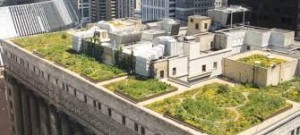Wood is a fundamental part of construction. It is a versatile construction material because it can be found everywhere. Early settlers in North America used wood to build log cabins since it was more efficient than transporting other materials all the way from Europe. (Rosmanitz, 2013) Wood did not require extensive tools in order to be produced as a construction material. Back then wood was the most reliable building material available. Wood is so reliable that houses built over 800 years ago are still standing today (Hoibo, Hansen, & Nybakk, 2015). Looking over the course of time, wood is still the preferred method when constructing houses today. However, after some time a new material became available. Concrete has been used in several ancient civilizations namely Rome and Egypt, where resources are scarce and wood could not be found. We see concrete used today mostly in basements, bridges and in large industrial structures because out of most materials, it is one of the most impermeable and cost effective. Continue Reading
Building
Embodied Energy in Building Materials
Chris Zecca – BCT
Nealon Weir – BCT
David Bailey – BCT
Timothy Cowles- Environmental Science
University of Massachusetts Amherst
In 2013, a mining company called Gogebic Taconite set its sights on the beautiful Penokee hills of northern Wisconsin. They proposed a four and a half mile long strip mine (which would eventually be expanded to twenty-two miles long) stretching across thirty-five acres of privately owned and managed forest land. The material mined from this project would be taconite, an ore that contains magnetite that is generally about 20-30% iron, typically of a low grade. To remove this iron from the ground, the mining company must remove forests, which are a natural carbon sink, and the top layer of earth, which, if aggregated, would be around 500 feet high and one and a half mile long (Iron Mining, 2015). This doesn’t even begin to cover the tailings left behind by the mining process. Using a computer aided design program called Solidworks, an estimate was done stating that tailings created over thirty five years of operation would be enough to cover the entire country (over 3,750 acres of land) with forty seven feet of tailings. For scale, an acre is just slightly smaller than a football field. The processes of land clearing, excavating, and mining are very fuel intensive, releasing tons of carbon dioxide into the atmosphere. In addition, a study by Bjornerud, Knudsen, and Trotter from Lawrence University shows that in the first thirty-five years of operation alone, two and a half billion pounds of sulfur would be released, which would combine with air and water to create acid rain. Finally, the runoff from this mine would leach heavy metals including arsenic, copper, mercury and zinc, and would also release phosphorus (a major wetlands pollutant) into the watershed (2012). These pollutants are poised to affect the headwaters of both the Tyler Forks and Bad River (which both empty into Lake Superior), in addition to over fifty miles of streams and rivers. The mine will also have a detrimental effect on the traditional wild rice fields of the Ojibwe and Chippewa Native American tribes, and the Penokee Aquifer, which provides clean drinking water to many residents (Iron Mining, 2015). The raw iron from this mine will eventually go on to be refined, and much of it will be combined with carbon to create steel which will be used for building materials around the world. Steel is a strong alloy (mix of metals) that provides many structural benefits. However, the side effects of its production must be considered as well. Continue Reading
HVAC Systems & Indoor Air Quality
Taylor Bardin (Natural Resource Conservation)
Alec Stephens (Building, Construction & Technology)
Ethan Finkel (Environmental Science)
Between attending classes, working a part-time job, going to the gym, finding time to socialize, and remembering about that weekly quiz an hour before lecture, the inevitable exhaustive and delusional feelings students often experience begin to set in before there is time for an afternoon nap. But that sluggish, unfocused feeling does not always reflect their sleep, dietary or even exercise patterns. Rather, it could be the result of poor indoor air quality (IAQ) found in many buildings on campus, places where students, in addition to faculty and staff, spend much of their day. For each breath humans take, between 1 and 2 million particles are deposited on the inside of the lungs (R. Peltier, personal communication, January 20, 2015), and while the majority of those particles are relatively harmless, poor IAQ increases exposure to and likelihood of sicknesses. Coupled with the chronic health effects of exposure to poor IAQ – asthma, respiratory illness, immune system deficiencies, DNA damage and cancer (Radakovic et al., 2014) – the air that we breathe is cause for serious concern.
The Effects of LEED Certified Office Buildings on Health, Productivity and Financial Savings
Sarah Paquette – Pre-Veterinary Sciences
Greg Kennett – Building & Construction Technology
Marshall Hood – Building & Construction Technology
University of Massachusetts Amherst
April 28, 2015
Government giving tax incentives to green building owner
Reference: Frazier, Jim. (2007). Green Buildings Get Tax Relief [Graphical Illustration], http://greensource.construction.com/features/0704mag_policywatch.asp
Imagine a workspace that was set up so every individual had access to a natural environment whether it is opening a window, basking in sunlight or smelling brisk air on a cool autumn day. Now imagine your typical cubicle. Small, artificial lighting, a little cramped, noisy from the other workers in the cubicles directly next to and around you. Which would you prefer? Some would say that the answer seems obvious – pick the workspace where you can experience the environment. Working within a building made from natural resources, you can feel more connected with your workspace and be proud of the company that you work for. It makes the daily 9 to 5 job more natural and enjoyable! This workspace is obtainable. With LEED certified buildings, the environment is and will feel fresher and cleaner leading to a healthier work environment.
Building Smaller for Future House Construction in the U.S.
![Home Interior Decorators (n.d.).Small house plan features [online image] Retrevied April 7, 2015 from: http://benteshusoghage.blogspot.com/2014/10/small-house-plan-features.html](https://websites.umass.edu/natsci397a-eross/files/2015/04/Small-House-Plan-Features-31-300x225.jpg)
Small home, Home Interior Decorators (n.d.).Small house plan features [online image] Retrevied April 7, 2015 from: http://benteshusoghage.blogspot.com/2014/10/small-house-plan-features.html
The American Dream: Downsized
For many, the “American dream” involves receiving an education, locating a dream job, finding a partner, and purchasing a large home. Tim and Shannon of Rochester, New York, thought they had it all when they finally settled down into their eight-room house. They both had graduate degrees and jobs that they loved. They had found each other during college and now with the purchase of their home they were finally ready to begin living. Or were they? Continue Reading
Green Roofs at UMass Amherst
Brianna Lancaster- Animal Sci
Quinn Lonczak- ECO
John Yip- BCT
INTRODUCTION AND THESIS
If you have studied, lived, or worked at the University of Massachusetts Amherst, then chances are you have seen it. Running alongside Massachusetts Avenue, just south of the Intramural Athletic fields, it is now a normal presence. “It” is a grand stream of excess stormwater produced by the ever growing amount of impermeable surfaces on the campus. It is not formed naturally. It carries pesticides, contaminants, and other harmful substances directly into the Mill River and it can be abated. Increases in development of these impermeable surfaces prevent water from being absorbed into the ground as it naturally would. These surfaces force large quantities of water to flow and collect in smaller areas that are not necessarily designed to handle that quantity of water. Continue Reading
Green Roofs for Endangered Birdlife in Boston, MA
Juliana Dolin – Pre-veterinary, Zachary Miller – Building Construction Technology, Sean Braley – Building Construction Technology
There’s no place like home, right? Imagine the comfort of your home, relaxing in a familiar territory, surrounded by family and friends. Now imagine that disappearing. Where would you go? What would you do?
This is the harsh reality for many animals as natural lands come down and concrete buildings go up. As urban expansion continues, open spaces diminish and with this several plant and animal species dwindle as well. According to the National Wildlife Federation, Smart Growth America and NatureServe (2005), over the next 25 years at least 22,000 acres of natural habitat and almost 1,200 species of both plants and animals will be lost due to metropolitan development (“Groups: Urban Sprawl”). The government lists 1,264 species to be endangered or threatened by extinction in the United States (“Groups: Urban Sprawl”, 2005). Over 300 of these species are in Massachusetts (“Massachusetts List”, 2014). Continue Reading
Environmentally Sustainable Buildings
Tim Bemis Building Construction Technology
Katherine Sholl Animal Science
Steven Barscz Natural Resource Conservation
Imagine looking up at the sky and spotting a Peregrine Falcon soaring through the air, looking for prey among a group of pigeons. In a blink of an eye, the falcon dive-bombs towards its prey at speeds of over 200 mph, making it the fastest animal on earth. Before you know it the falcon has grabbed the pigeon. Could you imagine if this animal went extinct? At one point these falcons almost became extinct in New England due to DDT issues, but thanks to conservation efforts and accommodations the Peregrine Falcon was removed from the endangered species list in 1999. One way we’ve accommodated these falcons was by providing an indirect perch on tall, thin buildings, such as the library at UMass. However, the latest trend is that short and widened buildings are being constructed into vacant areas. Unfortunately not much is being done to accommodate the falcon species, nor are many people aware of the effects construction causes if not properly planned for the environment. Most people are unaware that tall buildings are the ideal habitat for the falcon species. In return, it’s proven to also create a better environment for the area it occupies, hence alleviating effects to our often-fragile environment. Now imagine you’re resting near a pond. You see a salamander emerge from the pond. You’re surprised to see that this salamander has six legs. This deformity is caused by pollution runoff going into the water.
Green roof designs with major American cities
Brianna Ramsey – Environmental Science
Brandon Parker – Sustainable Horiculture
Richie Frend – BCT
The Urban Heat Island Effect is not a newly found issue, yet America has done little to combat the main causes of this problem. The Urban Heat Island (UHI) effect is only becoming more and more evident as cities continue to grow. Fighting this issue with real action is essential to improving the living quality in large American cities. Yilmaz et. al. (2009) gets to the root of this problem by stating that “as cities continue to grow and develop under climate change, identifying and assessing practical approaches to mitigate high urban temperatures is critical to help provide thermally comfortable, attractive and sustainable urban environments.” Much of the reason the Urban Heat Island effect has passed by under the radar is that during day to day activities the threat is not eminent, therefore is goes unchecked.
3D Printing in Construction
Jack Wilson (BCT) Jason Bhajan (BCT) Chris Roy (NRC)
Johnny Valek, a construction worker for over 25 years went to work just like any other day at 8 a.m… In his social life he was in the middle of preparing for retirement and also planning his daughter’s wedding. As Johnny looked forward to retirement, nothing excited him more to see his daughter get married. This is one thing that Johnny Valek will never get to experience. On that day, Valek entered work at the future St. Paul’s Saints stadium in Minnesota to begin construction and the unthinkable happened. Continue Reading


